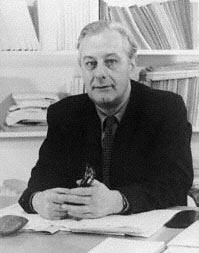Stuart Piggott facts for kids
Quick facts for kids
Stuart Piggott
|
|
|---|---|
 |
|
| Born | 28 May 1910 |
| Died | 23 September 1996 (aged 86) |
| Nationality | British |
| Citizenship | British |
| Spouse(s) | |
| Scientific career | |
| Fields | Archaeology |
| Institutions | University of Edinburgh |
| Influences | Mortimer Wheeler |
Stuart Ernest Piggott (28 May 1910 – 23 September 1996) was a famous British archaeologist. He was best known for his work on ancient sites in Wessex, an area in southern England.
Contents
Early Life and First Steps in Archaeology
Stuart Piggott was born in Petersfield, Hampshire. He went to school at Churcher's College in his hometown.
After leaving school in 1927, Stuart started working at Reading Museum. There, he became very good at studying pottery from the Neolithic period, also known as the New Stone Age.
In 1928, he joined the Royal Commission on the Ancient and Historical Monuments of Wales. For the next five years, he worked on an important study of Butser Hill near Petersfield. He also worked with Eliot Cecil Curwen at The Trundle, an ancient circular enclosure in Sussex.
Discoveries and Famous Digs
In the 1930s, Stuart Piggott began working with Alexander Keiller. Keiller was an amateur archaeologist who used money from his marmalade business to fund their digs. They excavated many sites in Wessex, including Avebury and Kennet Avenue.
In 1933, Stuart and his friend Grahame Clark wrote an important paper called "The age of the British flint mines." This paper led to the creation of the Prehistoric Society. Even though he didn't have a formal archaeology degree yet, Stuart enrolled at Mortimer Wheeler's UCL Institute of Archaeology in London. He earned his diploma in 1936. While studying there, he met his future wife, Peggy (Margaret Guido).
In 1937, he published another key paper about the early Bronze Age in Wessex. In June 1939, he and Peggy were invited to join the famous Sutton Hoo burial site excavation.
War and International Studies
During World War II, Stuart Piggott worked as an air photo interpreter. This meant he looked at photos taken from planes to understand what was happening on the ground.
He was sent to India, where he spent time studying the ancient sites of the country. This led him to write two books: Some Ancient Cities of India (1946) and Prehistoric India (1950). These experiences gave him a new way of looking at European prehistory when he returned to Britain.
Teaching and Later Works
After the war, Stuart went to Oxford University to study the work of William Stukeley, an early archaeologist. In 1946, he was offered a special teaching position in archaeology at Edinburgh University. He took over from V. Gordon Childe, another famous archaeologist. Stuart made Edinburgh's archaeology department well-known around the world.
He continued to publish many books. His book Neolithic Cultures of the British Isles (1954) was very influential. Later, his book Ancient Europe (1965) became a popular guide to Old World prehistory for over twenty years. It showed his belief that the past in Europe was connected and continuous.
In 1958, Stuart wrote Scotland before History, a book about Scotland's ancient past. In 1959, he published Approach to Archaeology, a helpful book for people new to the subject. He was also the president of several important archaeological societies, including the Prehistoric Society and the Society of Antiquaries of Scotland. He was also a trustee of the British Museum.
Stuart Piggott was interested in how archaeology itself began. This led him to write The Druids in 1968. Other books he wrote include Prehistoric Societies (with Grahame Clark), The Earliest Wheeled Transport (1983), and Wagon, Chariot and Carriage (1992). His last book was Ancient Britain and the Antiquarian Imagination (1989).
He passed away from a heart attack at his home near Wantage in Oxfordshire on 23 September 1996.
Family Life
On 12 November 1936, Stuart Piggott married Celia Margaret Preston. She was also an archaeologist and specialized in studying ancient finds. They met while they were students at the Institute of Archaeology in London. Their marriage ended in 1956. Celia Margaret Preston later became known as Margaret Guido.
Important Excavations
Stuart Piggott excavated many important sites, often with Richard J. C. Atkinson. These sites included:
- Cairnpapple Hill in West Lothian, Scotland.
- Wayland's Smithy in Oxfordshire, England.
- West Kennet Long Barrow in Wiltshire, England.
- Stonehenge in Wiltshire, England.
Awards and Recognition
In 1957, Stuart Piggott was elected a Fellow of the Royal Society of Edinburgh. This is a high honor for scientists in Scotland.
He received the CBE award in 1972. He also received many academic awards from scholarly groups in Britain and other countries. He retired from his teaching position at Edinburgh in 1977. In 1983, he was given the gold medal of the Society of Antiquaries of London. In 1992, he received the Grahame Clark Medal from the British Academy.
Images for kids
(subscription needed)


